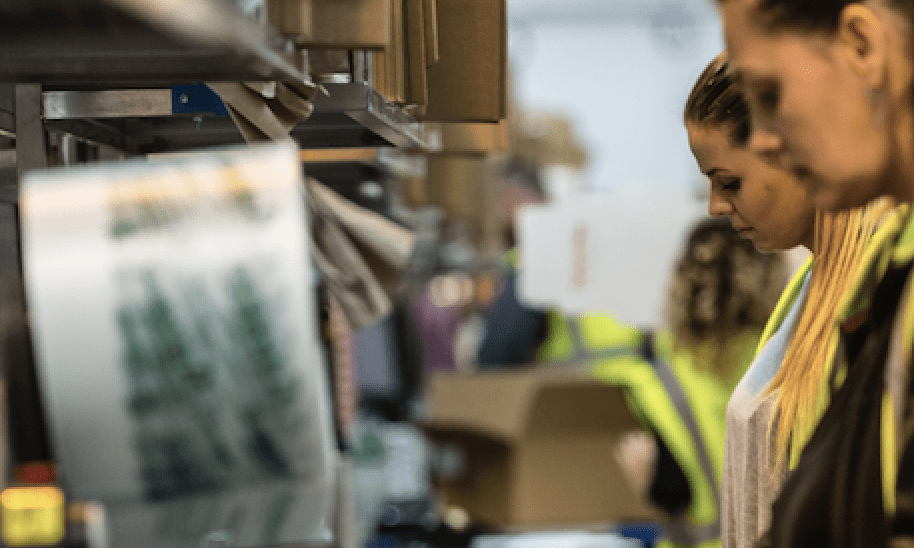Micro-fulfilment and Opportunistic Retail

eCommerce retail is changing. Opportunities abound for switched on businesses, but growth is no longer linear. Successful retailers need to be opportunistic, spotting a new market and rapidly responding. Micro-fulfilment is now a vital component of the agile eCommerce strategy.
Locating smaller volumes of stock closer to the customer is key to reducing carriage costs and meeting customer demand for fast fulfilment. But how? Traditionally it has taken retailers months, even years, to open new warehouse or distribution centre operations. That is simply not an option today when retailers need to spin up – and down – global locations on demand. Effective micro-fulfilment must provide agile retailers with access to new locations within weeks, not months. It must deliver complete visibility of the entire stock portfolio across every fulfilment location and provide in-depth insight to support an intelligent micro-fulfilment strategy.
Reality Check
Online retail has enjoyed a phenomenal boom over the past few years but with rising inflation denting consumer confidence and fuel prices having a very significant impact on carriage costs, the outlook for the next 12 months is far more challenging. Yet while some retailers are downgrading growth expectations and reviewing expansion strategies, opportunities still abound for retailers with the agility to move fast and the insight to support intelligent market exploration.
The priority over the next 12 months is speed. Retailers must rapidly identify opportunities as they arrive – by product range and/or geography – and respond quickly to capture the new market. With the changing cost pressures, efficient fulfilment models are vital – and that means getting the right products as close to the end customer as possible, both to reduce costs and meet expectations.
Adopting a micro-fulfilment strategy reduces the risk of delays at borders and enables far quicker customer delivery. It also provides retailers with far more control over the last mile delivery cost model, avoiding the increasingly profit-eroding cross-border carriage costs that are constraining retail access to overseas markets, old and new. Furthermore, it allows retailers to quickly and cost effectively explore new market opportunities, maximise local demand for specific product lines, and even shift old and slow moving stock in new locations.
Flexible Fulfilment Model
Micro-fulfilment is exciting, but this is a vastly different fulfilment approach for retailers used to taking months, even years, to add distribution locations. With agility and the ability to move in – and out of – markets quickly and cost effectively now a priority, retailers need to embrace a flexible distribution model.
Adding third party fulfilment services to existing fulfilment centre operations is a quick, effective way to expand operations. This is also the best way to create short term micro-fulfilment (or pop-up) locations to support a retailer’s international needs through a partnership or outsourced location.
Effective expansion can be achieved in just a couple of weeks – with the right approach. In practice this means ensuring every part of the distribution process is visible – from the long standing UK based warehouse to multiple third party fulfilment locations. By using the same cloud based solution to intelligently manage the entire fulfilment process, operations can be seamlessly optimised.
With a single, integrated order management system (OMS), Warehouse Management System (WMS) and courier management system (CMS), orders are automatically balanced across all locations. Retailers can manage stock and inventory levels globally, identify fast and slow moving stock in different markets, and intelligently allocate goods to specific centres to maximise sales opportunities. Furthermore, postage and courier costs can be assessed and orders automatically allocated to the best courier to minimise postage costs.
Intelligence Driven Growth
Successful opportunistic retail also demands rapid, confident decision making. Retailers need to use this powerful business intelligence quickly to grab opportunities. For example, with a single view of all stock, global customer demand and the cost of shipping, retailers can prioritise expansion opportunities from Europe to the US, Canada and Australia. For established retailers, analysing recent sales trends to specific locations, including seasonality, will identify the products or lines most in demand. Local fulfilment centres also give start-up brands a low risk way to test new markets.
With intelligence led inventory optimisation, retailers can better understand trends in stock turnover in all locations – minimising both over stocking (which ties up capital and incurs high storage cost per sale) and missed sales opportunities due to running out of stock. Aged inventory analysis, for example, will help to reduce wastage due to out of date or best before date issues and avoid unnecessary restocking.
In addition, the embedded CMS ensures retailers can continuously assess the cost of delivery, compare it to the cost passed on to customers, and track delivery speed. This insight helps retailers to ensure postage costs are recovered, especially in more challenging destinations, and gain insight into any delivery issues that could affect the customer experience and, as a result, undermine performance in a new pop up location.
Conclusion
Retail has changed fundamentally and retailers require new levels of operational and technology flexibility to maximise opportunities. The supply chain challenges and cost models affecting retail in 2022 will be quite different in 12 months’ time. Traditional timelines for supply chain overhaul are obsolete and a major business constraint: in a fast changing market, speed is key to success and that means moving away both from traditional retail distribution models and linear expansion plans.
The ability to leverage cloud based fulfilment services to introduce new locations on demand is changing the game. It is enabling the next generation of intelligence led business growth and empowering switched on businesses to embrace opportunistic retail and maximise opportunities while the competition is too slow to respond.
